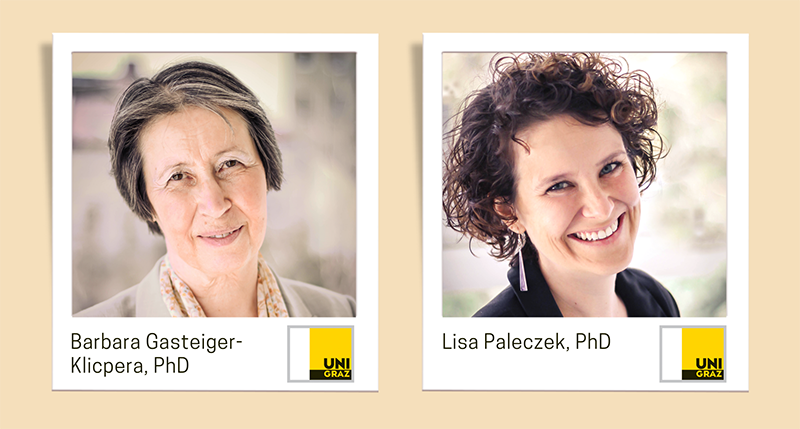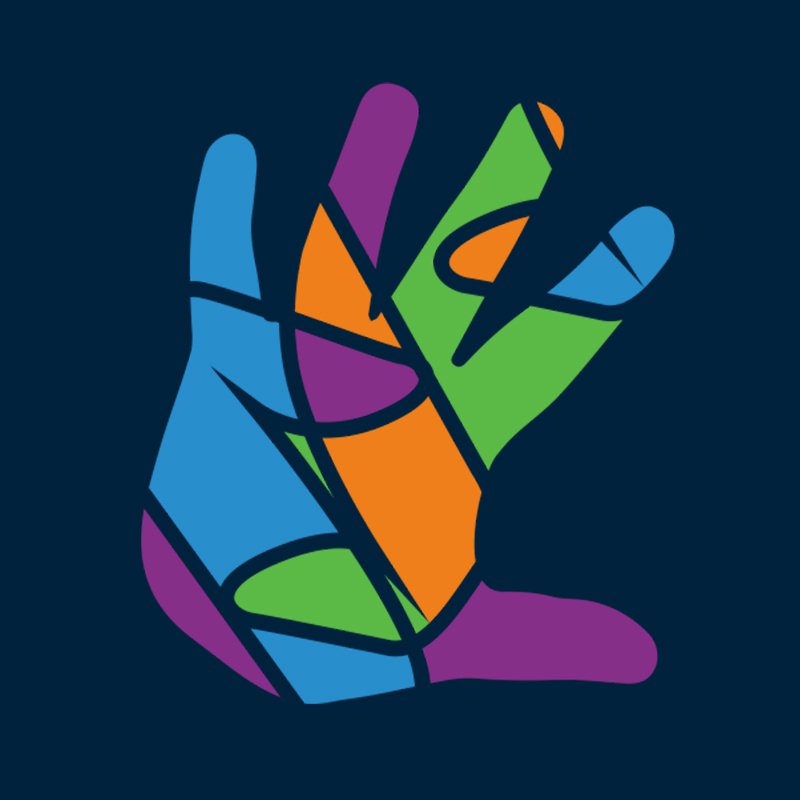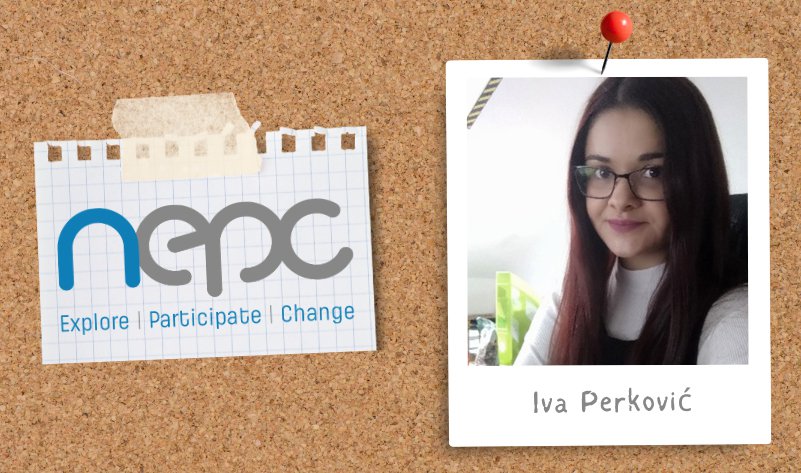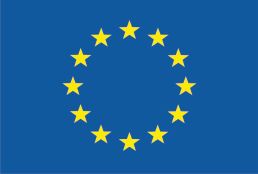




Learn more about Inclusive Inquiry - participatory method focused on making the lessons as inclusive as possible for all students and supporting their voice.
In this interview with Lisa Paleczek and Barbara Gasteiger-Klicpera from University of Graz (UNI GRAZ), HAND:ET partner leading the quality assurance of the project as well as the implementation of the project and the evaluation in Austrian schools, we will discuss the Inclusive Inquiry - a collaborative action research model which takes into account the learners diversity and has strong connection with relational competencies which are one of the core concepts HAND:ET program is based on.
If you want to learn more about this participatory method focused on making the lessons as inclusive as possible for all students and supporting their voice, we kindly invite you to register here for the webinar Child-Teacher Dialogue: A Participative Approach to Making Lessons More Inclusive that will be held online on the September 28th 2023 at 3 p.m.
Introducing the HAND:ET Consortium & SEDA competencies is a series of web articles that will be regularly shared via HAND:ET web site and social media channels (FB, TW). We will present the project partners through short interviews with members of the project teams on the topics from the field of their expertise that is also connected to and relevant for the HAND:ET project main theme: social and emotional competencies and diversity awareness (SEDA) and empowering teachers in schools.
HAND:ET project is empowering teachers for the complexity of everyday working life and enabling them to deal flexibly with the new challenges connected with the societal changes.
University of Graz (Uni Graz) is the second oldest university in Austria. With about 31.000 students and 4.300 employees, it is one of the largest institutions of higher education in Austria. The university has a strong international profile and is involved in numerous global networks. In its international project activities, the university is committed to the transfer of know-how and the development and implementation of project-related objectives for the benefit of and progress in higher education. In basic and applied research, the university fosters topical and methodological variety within an international cooperation network and builds its profile by determining research focuses under the consideration of socially relevant research questions.
The Inclusive Education Unit of the Department for Education Research and Teacher Education focuses on the concept of inclusion and how it can be applied in various educational settings. The team approaches this from a humanitarian perspective, emphasizing the importance of equal opportunities and full participation for individuals with diverse abilities and strengths. The unit’s core objective is to advance the development of an inclusive society based on evidence-based practices.
The primary areas of research interest revolve around Inclusive Education and Special or Supportive Education. We also pay special attention to the growing influence of digitalization and focus on how to effectively use information and communication technologies in teaching, diagnostics, and support services.
Lisa Paleczek is an assistant professor at the University of Graz, Department of Education Research and Teacher Education, Inclusive Education Unit and also works for the Research Centre for Inclusive Education. She studied Psychology and Educational Research (Special Needs Education) and got her PhD in Inclusive Education. Her research focuses on inclusive teaching and learning, assessment, reading and language abilities, social-emotional skills, digital skills and on teacher education.
Barbara Gasteiger-Klicpera is Professor for Inclusive Education and Head of the Inclusive Education Unit at the Department of Education Research and Teacher Education at the University of Graz. She is founder and part of the steering committee of the Research Centre for Inclusive Education. Her research focuses on inclusive education, learning disabilities, diversity and health literacy as well as interventions for children with emotional and social difficulties.
You have experience in a different approach to supporting teachers in responding to learners’ diversity in the classrooms and that is by implementing a collaborative action research model – inclusive inquiry – which is focused on improving the classroom practices by reconsidering existing thinking and practices and breaking down existing barriers for inclusion of all students.
Tell us more about the rationale behind it.
Inclusive Inquiry is a strategy or an approach that aims at fostering inclusive practices in schools. It focuses on finding ways of including all children in lessons, particularly those who are seen as ‘hard to reach’. In principle, it is not specified which students are meant by ‘hard to reach’ and should be involved. The most important approach of this strategy is to teach lessons in a way that all students are engaged with learning and that all can profit from learning together. Students who are 'hard to reach' can be students with behavioral difficulties or shy students, students with disabilities or with low socioeconomic background or with another first language than the language of instruction. An important aim is to engage all students in learning. Inclusive Inquiry therefore asks what are the ways, strategies and measures to engage all students in the classroom, to provide an inclusive lesson.
The developers of the model, Ainscow and Messiou, suggested an action research process that is divided into three phases: “plan-teach-evaluate”. The process starts with planning and designing a lesson, then teaching this lesson and finally evaluating it together.
During the three phases, several teachers (usually three) work together as a team. Together they prepare a lesson, plan it in a way that they think all students can learn well and be engaged. As a second step, this lesson is implemented by one of the teachers. The other two teachers observe the lesson and take notes. The focus is on making the lesson as inclusive as possible, on making sure that all students can learn well. Afterwards, the teachers sit down together and work out feedback for the lesson. They discuss which methods and strategies worked well for all students to learn well, and which points in the lesson did not work so well, where not all pupils were able to learn in an engaged way.
It is important that the focus of the discussion is not on the teacher as a person, it is not discussed how good or not so good he/she taught the lesson, but the focus is on the fact that the lesson itself is supposed to involve everyone, inspire everyone, especially the students who are 'hard to reach'. At the end of the joint reflection on the lesson, a measure or a strategy is selected that is suitable for making the lesson more inclusive and that is to be implemented in the next lesson. The next teacher then teaches this lesson while the others observe. Again, the focus is on whether all students are reached and how the lesson can be designed differently in order to reach all pupils. At the end of the lesson, the three teachers reflect together again, and so on. This means that the three teachers create a common cycle of lesson development with the student researchers. At each step, the lesson becomes more inclusive and more student-centered. A special characteristic of the Inclusive Inquiry, however, is the participation of the students in this cycle.
In each class, two or three students are selected to accompany the teachers as co-researchers (student researchers). The students first learn what their job is, they are trained as co-researchers. Together with the teachers, they observe the lessons in a classroom (not their own), especially with regard to the lesson’s inclusiveness. After the lesson, the student researchers take part in a joint reflection and discuss their observations with the teachers. In this way, the discussion is extended and enriched with the particular perspective of the students, with their voice. The selection of student researchers is not meant to be based on performance criteria, on the contrary. It is a voluntary opportunity and every student should have the chance to step into this role once. The students broaden the teachers' perspective as they focus especially on the needs of their peers and pay special attention to how their peers learn and what gets in the way of learning.
Further information can be found in the Inclusive Inquiry Guide that was developed in the project. It is available for free on the project homepage ReHaRE.
When discussing collaborative action research, usually it is understood as a collaboration between teachers, or between teachers and researchers. It seems that students’ participation, students’ voice and dialogue between students and teachers has significant value for the impact of this model.
Can you explain the connection between the students' participation and relational competencies? How students, especially those from marginalized groups, benefit from developing these concepts in the learning process?
Yes, this was very special in the ReHaRe project. Usually, researchers work either with students or with teachers. A collaboration between the three groups, teachers, students and researchers is rather rare, however, it proved to be very beneficial for all of us.
Students were really proud of their role as co-researchers and felt important because they were being asked for their opinion and, this was probably the most crucial part, their opinion and their ideas really mattered in the end. In the project, students and teachers needed to find new ways to communicate, new ways to listen to each other, new ways to establish a meaningful dialogue between them. Meaningful dialogue means listening and being heard, taking into account the opinion and ideas of the other person.
In some cases, students needed to learn to articulate their opinions. They needed to let go of feelings like “fear” or “too much respect” or “not wanting to give feedback to the teachers”. Students also needed to learn that stating an opinion and proposing changes (for example in the lesson) did not mean that they were being disrespectful to their teachers. They were proposing other options of how the lesson could reach more students and how more students could benefit and learn in the lessons. This strengthened the relationship between students but also between students and teachers. Especially students from marginalized groups felt included and were happy that their voice was finally heard.
The learning of the students benefited very much. On the one hand, the co-researchers needed to think about how they learnt and studied best; what conditions they needed to be able to concentrate on new content and to remember old content to be able to connect them; what they wished for in a lesson or from the teacher; what they expected from their classmates in order to enhance their learning; and so on. After getting aware of their learning needs, students needed to share these needs. This meant that they needed to communicate these needs. After communicating, the ideas were put into practice and the students needed to evaluate whether their ideas were really supporting their learning or not. For example, one of the student’s ideas was that they could always eat during the lessons. After trying it out, they decided that this did not really foster their learning.
We will never forget how adequate and precisely one of the student researchers put it: “We know best how children feel because we are children” and that is the key to the whole project. Listening to the voices of the people who are concerned with the changes. It clearly relates to the slogan “Nothing about us without us.”, which is one of the pillars of autonomy and self-determination movements.
What were initial teachers’ impressions on the idea of students actively participating in planning and enhancing the learning process?
As you might imagine, teachers were a little reluctant when we told them about the concept. Especially Grade 1 teachers were not sure about how the students could act as co-researchers and articulate their ideas. Likewise, teachers with many second language learners or students with special educational needs doubted the approach.
Apart from insecurities concerning how students could articulate their opinions and ideas, teachers were also reluctant to include students in their lesson planning. We needed to stress that the teachers stayed in charge in the sense of being the experts in lesson planning. Yet, the teachers managed to realize the additional value of listening to their students' voices. The teachers’ feedback after the project was that they were very surprised about how well the students, especially those who had been seen as ‘hard-to-reach’, managed to collect data, describe their learning needs, and communicate ideas concerning elements that make the lessons more inclusive. Also, students were very good observers and realized when their classmates lost focus or interest. Then, they were eager to enhance the quality of the lesson to enable all the students to participate.
Together with the teachers of the participating countries, we developed the student voice toolkit (Students’ Voices Toolkit (reachingthehardtoreach.eu). This document describes activities specifically tailored for use with primary school students. It focuses on two questions: How do students view learning and teaching in their school? And: How can their ideas be used to make lessons more inclusive?
This document is a collection of various examples of how teachers can engage with the views of students concerning student learning. The examples can not only be used by teachers with their students to facilitate the dialogue on learning, but they can also be used by student researchers (after they received training to use these activities and collect data) to gather the views of their classmates, which they would then analyse.
With the help of another document Training Students to be researchers Manual (reachingthehardtoreach.eu) that was developed in the project, teachers are enabled to support students to be student researchers involved in the process of Inclusive Inquiry. It aimed at supporting student researchers to collaborate with the teachers to make the lessons more inclusive. The student researchers gathered ideas from their classmates to better understand how lessons could become more inclusive. Then, they would work together with the teachers and design inclusive lessons. Student researchers also needed to become familiar with ways of how to observe a lesson to then discuss with teachers about how the research lessons can be made more inclusive
Positive effects of this model expanded beyond the classrooms. What were the effects on the relationships between teachers, school life, and relationships between schools?
For teachers, it was new to cooperate this closely with their colleagues. It is not only the process of planning a lesson together but also the situation that they were observed by their colleagues while teaching this lesson. They had to get off “behind closed doors”-policies, which are very common in many countries and schools. Additionally, the teachers needed to cooperate with their students. They needed to collaborate with the student researchers of their classroom but also with students from other classrooms. These corporations strengthened the sense of community between the classrooms and in the schools. You need to invest time and patience in a process like the Inclusive Inquiry. However, judging by the feedback we got from teachers and students participating in this process across Europe, it is a very rewarding cooperation that opened new doors through dialogue.
Overall, it would be very important to involve students more often and more intensively in the process of lesson planning and evaluation. Their perspective is particularly helpful when it comes to including all students. They bring new perspectives, but students can also take more responsibility for collaborative learning, which they are sometimes not given credit for.
In addition, cooperation between teachers is one way to implement and develop further inclusive lessons. Teachers should have more opportunities for sharing their experiences, for joint planning and evaluating. This would not only relieve teachers, but would also be a way to further develop inclusion in classrooms.
For more information about this model and supporting teachers with including all students, we kindly invite you to register here for the webinar Child-Teacher Dialogue: A Participative Approach to Making Lessons More Inclusive that will be held online on the September 28th 2023 at 3 p.m.
You can learn more about the project on the official HAND:ET website, and to stay informed about the ongoing project activities and upcoming outputs follow official project Facebook or Twitter.


